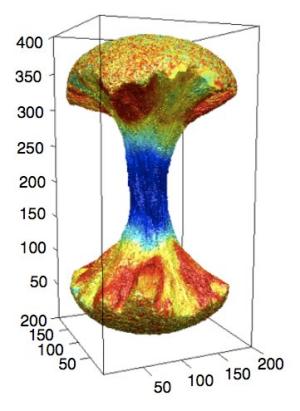
Tamás Pusztai1, György Tegze1, Gyula Tóth2, László Környei3, Gurvinder Bansel4, Zhongyun Fan4, László Gránásy1,4
1Institute for Solid State Physics and Optics, Wigner Research Centre for Physics, P.O. Box 49, Budapest H-1525, Hungary
2Department of Mathematical Sciences, Loughborough University, Loughborough, Leicestershire, LE11 3TU, U.K.
3Department of Mathematics and Computational Sciences, Széchenyi István University, Győr 9026, Hungary
4BCAST, Brunel University, Uxbridge, Middlesex, UB8 3PH, United Kingdom
Advanced phase-field techniques have been applied to address various aspects of polycrystalline solidification including different modes of crystal nucleation. The height of the nucleation barrier has been determined by solving the appropriate Euler-Lagrange equations. The examples shown include the comparison of various models of homogeneous crystal nucleation with atomistic simulations for the single-component hard sphere fluid. Extending previous work for pure systems [Gránásy et al., Phys. Rev. Lett. 98, 035703 (2007)], heterogeneous nucleation in unary and binary systems is described via introducing boundary conditions that realize the desired contact angle. A quaternion representation of crystallographic orientation of the individual particles [outlined in Pusztai et al., Europhys. Lett. 71, 131 (2005)] has been applied for modeling a broad variety of polycrystalline structures including crystal sheaves, spherulites and those built of crystals with dendritic, cubic, rhombo-dodecahedral and truncated octahedral growth morphologies. Finally, we present illustrative results for dendritic polycrystalline solidification obtained using an atomistic phase-feld model.


